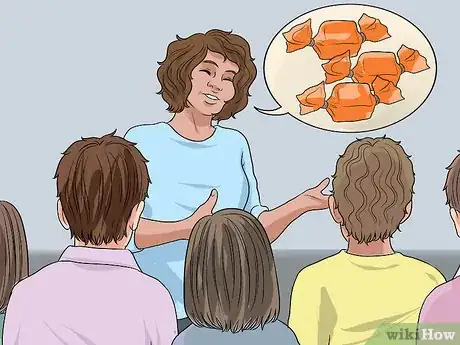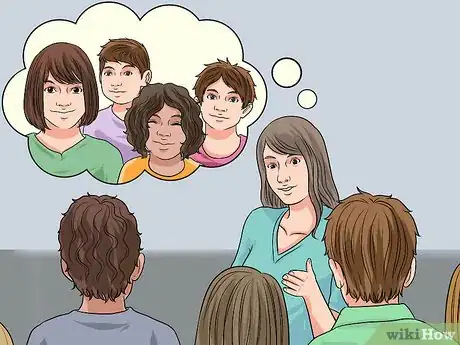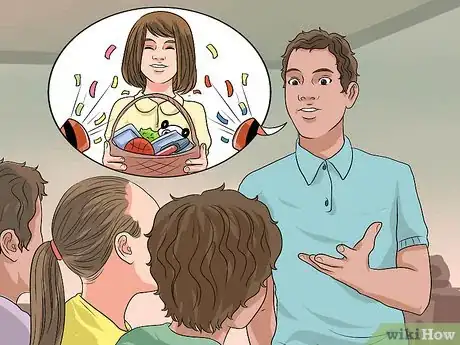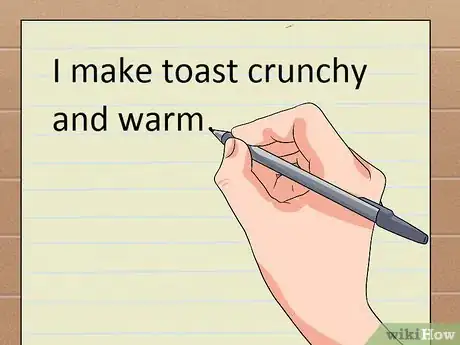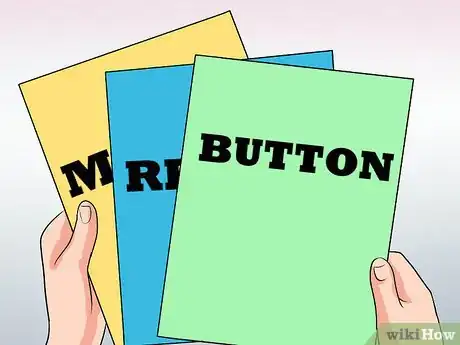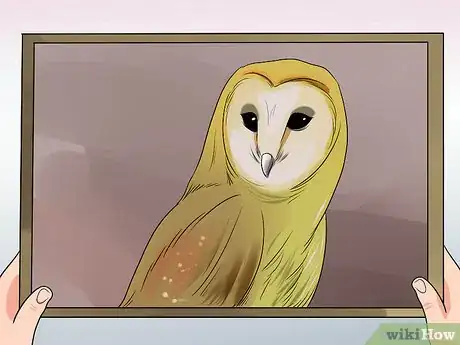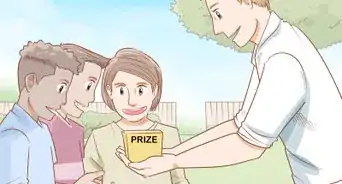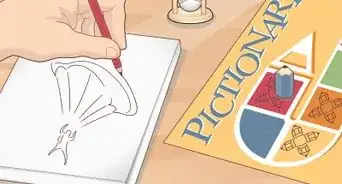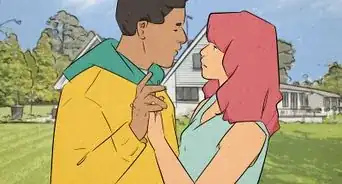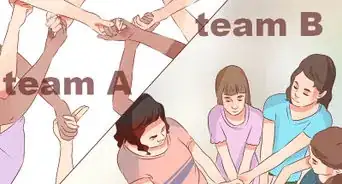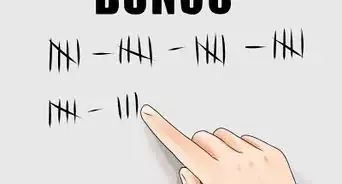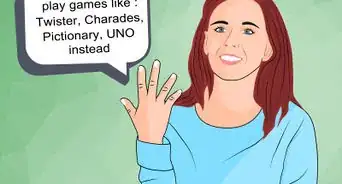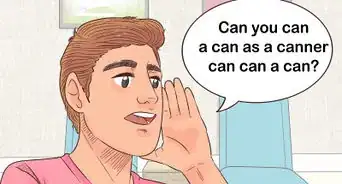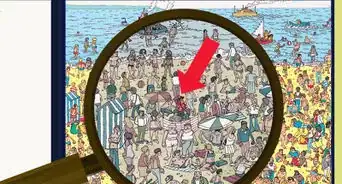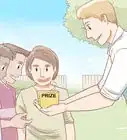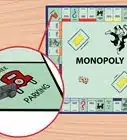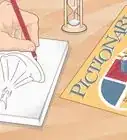wikiHow is a “wiki,” similar to Wikipedia, which means that many of our articles are co-written by multiple authors. To create this article, 51 people, some anonymous, worked to edit and improve it over time.
There are 7 references cited in this article, which can be found at the bottom of the page.
wikiHow marks an article as reader-approved once it receives enough positive feedback. This article received 14 testimonials and 82% of readers who voted found it helpful, earning it our reader-approved status.
This article has been viewed 1,251,852 times.
Learn more...
Scavenger hunts are a very popular game for kids. They are great for parties and summer vacations. Scavenger hunts are not just limited to kids, however; even adults and teens can still enjoy them. They are fairly easy to organize and even easier to play. The most difficult part, perhaps, is coming up with creative ideas. This article will not only show you how to organize a scavenger hunt but also how to host one. It will also give you ideas for themes.
Steps
Sample Item Lists
Organizing a Scavenger Hunt
-
1Decide when and where you want to have the scavenger hunt. Scavenger hunts can be held during the day or evening. They can also be held just about anywhere, including parks, your home or neighborhood, or even a school. When and where you host the hunt will depend on how old the players are, how large the group is, the weather, and what sort of scavenger hunt you are doing.[1] Here are some ideas to get you started:[2]
- Warm and sunny days are for outdoor scavenger hunts.
- If the day is rainy or cold, it might be better to bring the scavenger hunt indoors.
- A park is great for older players or large groups. A backyard might be better for really young players.
- A house is great for all ages, but it might be difficult to accommodate a large group. You may also want to block off private areas, such as bedrooms and offices.
- Your neighborhood is a great place for a large scavenger hunt. If you plan on involving your neighbors, talk to them first, so that they know when to expect the players to come by and ask for the item.
-
2Decide which type of scavenger hunt you want to do. There are many different types of scavenger hunts, but all of them involve an item list. Here are some ideas to get you started:
- Give the players a list of items. Hide the items around your location, and have the players search for the items. The first player/group to find all of the items wins.
- Have the players go door-to-door asking for items off the list. Be sure to plan ahead with your neighbors if you choose to do this.
- Instead of hiding items, consider having each team to take a photo of an item from the list. This is great for parks, especially national parks where you can't take things from nature.
Advertisement -
3Buy or make a prize to have at the end of the hunt. This will act as motivation for each team, especially if the scavenger hunt is timed. You can choose anything you want as the prize, but you might want to keep the ages of your players in mind. Here are some ideas to get you started:
- If the hunt is for kids, a good prize might be small toys or candy.
- Movie tickets or cash are great prizes for older children.
- Adults will appreciate a gift certificate to a nice restaurant, a gift card to a store, or a basket of goodies.
- Consider basing the prize off of a theme. For example, if the hunt has a superhero theme, you could have superhero masks and capes as the prize.
-
4Create a list of items for the guests to find. The list can include easy-to-find items, such as a pencil or a sheet of paper. It can also include harder-to-find items, such as a picture frame or a needle and thread.[3]
- If the teams will be going door-to-door, choose inexpensive items people will be willing to give, such as a sheet of paper, a pencil, or a paperclip. You can also give your neighbors the items ahead of time so that they don't have to use their own.
- If your teams are going around the neighborhood taking pictures of landmarks, tell them the general area the landmark is in, such as “the statue in this park” or "a red flower."
-
5Consider the age group of your players. There are different types of scavenger hunts, and some are more appropriate for older players than younger ones. For example, clue-based scavenger hunts might be difficult for very young children, but they'll be more interesting for teens and adults. Door-to-door scavenger hunts also aren't recommended for small children for safety reasons. On the other hand, picture-based scavenger hunts might be more fun for small children than for older ones. Here are other things to keep in mind:[4]
- Plan on having adult helpers or chaperons for scavenger hunts involving small children, especially if you have a large group. This will make the kids easier to keep track of.
- Consider having second and third place prizes for very young children. This way, the ones who don't "win" won't feel left out.
- Keep the age group in mind when coming up with a theme. Small children might be interested in themes revolving around nature and animals while older children might be more interested in themes that involve literature, video games, and movies.
Overseeing the Scavenger Hunt
-
1Divide your guests into teams on the day of the hunt. They can pick their own teams, or you can assign teams. If there are children playing, be sure to assign an adult to head each team. If there are many people playing, make teams of 3 or 4. Each team should have an even number of people.
- If your guests are all different ages, consider pairing some of the younger guests up with the older ones. This will prevent any advantages and disadvantages between the groups.
- A great way to organize teams is by having people count off in numbers, such as 1 and 2. All of the 1s will be in one group, and all of the 2s will be in another.
- Another great way to organize teams is by having people pick colored slips of paper from a hat. All of the blue slips will be on one team, all of the red slips on another, and so forth.
-
2Give each team a list of items and a time limit. The guests should have enough time to find most of the items. How long the scavenger lasts will depend on how many items the guests have to find. An hour is a good place to start if there are a lot of items. It is also recommended for door-to-door scavenger hunts.
- For very young children (preschool age) limit the scavenger hunt to no more than fifteen minutes. This will be long enough to keep the kids entertained, but short enough to keep them from getting bored.
- If the item list is very simple or short, 30 minutes should be enough.
-
3Consider giving the players something to collect the items in. This will make it easier for them to carry everything. It will also prevent small items from getting lost. If the hunt has younger players, have an adult carry the container. This will allow the children to run about freely, collecting the items. It will also prevent the items from getting lost if the child trips, falls, and drops the container. If the players are only taking pictures or writing the item down, you don't need to give them this. Here are some items that you can use as a container:
- A basket, especially with a handle, will be the easiest to carry.
- A sack or bag will be cheaper than a basket. Consider a paper bag instead of a plastic one. Paper bags hold their shape better, so the items will be less likely to get mushed.
- A box can be difficult to carry, but it is also the sturdiest. You can also find decorative boxes to match the theme of your scavenger hunt at an arts and crafts store.
-
4Tell the players how the scavenger hunt will end. Most scavenger hunts end after a certain amount of time. The team that finds the most items wins a prize. Here are some things you should keep in mind:[5]
- If the scavenger hunt has a time limit, consider giving the players a stopwatch. You can also tell the players at what time the scavenger hunt ends. For example, if the scavenger hunt starts at 1 pm and lasts an hour, tell the players to be back by 2 pm.
- If your players are very young, you may want to add a second or third place prize to avoid any hurt feelings, jealousy, or tantrums.
-
5Let the players know where they must meet once they finish. Having a meeting spot is very important. Some teams may finish before other teams do. You will want to have a place for these players to go to while they wait for everyone else to finish. This can simply be the same spot that you started the scavenger hunt in. It can also be a landmark, such as a statue in the park the hunt is taking place in. Make sure to have a person at the meeting spot to greet the winners and give them the prize.
Coming Up with Themes and Ideas
-
1Know that there are a lot of ways to step up the creativity of your hunt to the next level. This section will give you lots of ideas on how to make your hunt more unique and interesting. It will help you find a theme and design. It will also offer a few creative twists. You don't have to use all of the ideas from this list. Choose the ones that appeal to you the most.[6]
-
2Establish a theme. This will make it a lot easier to come up with items. If you are having a scavenger hunt as part of a party, consider tying the theme to the party's theme. For example, if your party has a superhero theme, give the scavenger hunt a superhero theme as well. Use items that the superheroes would use, such as masks and capes. Here are some more ideas to get you started:
- Base the scavenger hunt off of the guests' interests. For example, if the scavenger hunt is for a literature class, base all of the items of the different books the students are reading. If Harry Potter is on the list, consider including items such as broomsticks, owls, capes, and feather quills. You can even set the hunt up in a library.
- Base the scavenger hunt off of a holiday. If the hunt is during October, consider giving the hunt a Halloween theme. Have the players search for items that are related to Halloween, such as pumpkins, black cats, bats, spiders, witches, and skeletons.
- Focus on your location. If your scavenger hunt takes place in a park, scout out the park first and write down some things you notice, such as a weird-looking tree or a particular statue. You don't want the players to look for something that does not exist.
- Invent your own theme. You can base the hunt off of any theme you want. Here are a few just to get you started: animals, books, food, historical time period, ocean, movies, musical theater, rainforest, superhero, video games, and so forth.
-
3Instead of writing down item names on your list, write down what the item does. The players will need to figure out what the item is before going to find it. This is great for scavenger hunts that involve taking pictures. You can also make the riddles rhyme. For example:
- Instead of writing down "toaster," you could write, "I make toast crunchy and warm."
- Instead of writing "bookmark," you could write: "I save your place in a book."
- Instead of writing "needle and thread," you could write: "We go hand-in-hand as a pair, and you might use us to repair a tear."
- Instead of writing "broomstick" you could write: "A witch may use me to get around, but most will use me to sweep up the ground."
-
4Turn a scavenger hunt into a bingo game. Start with a bingo grid and write the name of an item in each square. Have the players check off the items that they find. The first person to get five marks in a horizontal, vertical, or diagonal line wins.[7]
- This is great of scavenger hunts that take place outside or in a nature park.
- Consider basing the items on your grid off of the location. For example, if you are having a scavenger hunt at a beach, you could include the following: sea shell, sunbather, sand castle, seagull, crab, barking dog, and towel.
-
5Give the players a list of items to find and have them write down the item in blank space provided. For example, you can tell your players to look for something blue, something soft, and something green. They player writes down what they found (a blue marble, a bunny rabbit, a green leaf) in the blank spaces you provide for them. The first person to complete the sheet wins.[8]
- This is great for nature walks and parks.
- Make sure that your list is related to the location. You don't want the players to look for something green if they are in a desert or rocky cave.
-
6Keep the ages of the players in mind. You don't want to make your scavenger hunt too difficult for young players, or too juvenile for older players. Shorter lists with easy to find items would be suitable for young children while longer lists (with clues) might be more interesting for teens and adults. Here are some more ideas:
- For young children, use large fonts and lots of colors. Try to have no more than 10 items. It might also be a good idea to include a picture of the item, in case some of the players are still learning how to read.
- For older children, use large fonts and lots of colors, but omit the pictures. Put between 10 and 15 items on your list.
- For teens and adults, use a regular sized font. You can use colors to make the list look nicer. Your players may also find clues more interesting than simple item names.
-
7Match the theme of your list to the theme of your scavenger hunt. This will make your list more interesting to look at. You can print your list out on attractive printed paper, or add a picture to the bottom of each list. Here are some ideas to get you started:
- If your scavenger hunt has a beach theme, print the list on some beach-themed paper. You can also include a picture of sand, a palm tree, and some ocean waves at the bottom of your list instead.
- If your scavenger hunt takes place outside in a part, try to find some paper that has a leaf border.
- If your scavenger hunt is for an English class, consider including images at the top, bottom, or around the edges that are relevant to the books the students had read. For example, if the students have just read Harry Potter you could include pictures of owls, wands, and broomsticks.
- If the hunt is has a Renaissance or Medieval theme, consider using old-looking parchment paper instead. Use a fancy font that looks like it was written with a calligraphy pen.
Community Q&A
-
QuestionWhat are some riddles for food items?
 Community Answer"It comes in a bowl and sometimes a cup. You use a set of chopsticks to slurp them up." Answer: Ramen or noodles. "Cold as ice but with more flavor. Served on a stick with tastes you'll savor." Answer: Popsicles. "Erroneously thought to be of German descent. They used to be sold for only ten cents." Answer: A Hamburger. "Triangle-shaped from south of the border. You enjoy these as you wait for your order." Answer: Tortilla chips. "Enjoyed hot or cold according to taste. Have enough of this and you'll be buzz-faced." Answer: Coffee. "It doesn't bark or snarl but eating one can be fun. It's plump and it sizzles and fits nicely in a bun." Answer: A hot dog.
Community Answer"It comes in a bowl and sometimes a cup. You use a set of chopsticks to slurp them up." Answer: Ramen or noodles. "Cold as ice but with more flavor. Served on a stick with tastes you'll savor." Answer: Popsicles. "Erroneously thought to be of German descent. They used to be sold for only ten cents." Answer: A Hamburger. "Triangle-shaped from south of the border. You enjoy these as you wait for your order." Answer: Tortilla chips. "Enjoyed hot or cold according to taste. Have enough of this and you'll be buzz-faced." Answer: Coffee. "It doesn't bark or snarl but eating one can be fun. It's plump and it sizzles and fits nicely in a bun." Answer: A hot dog. -
QuestionHow can I start a hunt so everyone is not going the same way at the same time?
 Community AnswerMix the items or clues so every group gets the same list in a different order.
Community AnswerMix the items or clues so every group gets the same list in a different order. -
QuestionWhere is the best place to hold a scavenger hunt?
 Community AnswerIt depends. If it is for small children, around the yard, house, or neighborhood is probably the best and safest option. For older kids and adults, having the scavenger hunt around a park or city might be more interesting.
Community AnswerIt depends. If it is for small children, around the yard, house, or neighborhood is probably the best and safest option. For older kids and adults, having the scavenger hunt around a park or city might be more interesting.
Warnings
- Always plan ahead with your neighbors. Do not send your players to complete strangers' homes. Some people may not appreciate a random group of kids going up to their home and asking for a random item.⧼thumbs_response⧽
- If planning a scavenger hunt for young children, make sure to have an adult head each team.⧼thumbs_response⧽
- If your hunt is at night, provide flashlights or headlamps for assistance.⧼thumbs_response⧽
Things You'll Need
- Scavenger hunt list
- Group of participants
- Items to hide
References
- ↑ https://www.goosechase.com/blog/planning-a-scavenger-hunt-for-adults/
- ↑ https://www.verywellfamily.com/family-scavenger-hunt-1270424
- ↑ http://www.outdoorbookclub.org/blog/how-to-plan-a-scavenger-hunt-for-grownups
- ↑ https://www.playpartyplan.com/scavenger-hunt-ideas/
- ↑ http://scavenger-hunt.org/how-to-do-a-scavenger-hunt/
- ↑ https://www.scavenger-hunt-fun.com/scavenger-hunt-list-ideas.html
- ↑ Bewilderment, Spring Scavenger Hunt
- ↑ Bewilderment, Spring Scavenger Hunt
About This Article
To create a scavenger hunt, start by deciding when and where you want to have it, then create a list of items for the players to find. Be sure to consider the age of the players when choosing the items and deciding where to hide them! On the day of the hunt, divide the players into teams and give each team a list of items to find. Set a time limit and start the game! To learn about coming up with cool themes and ideas, read on!





